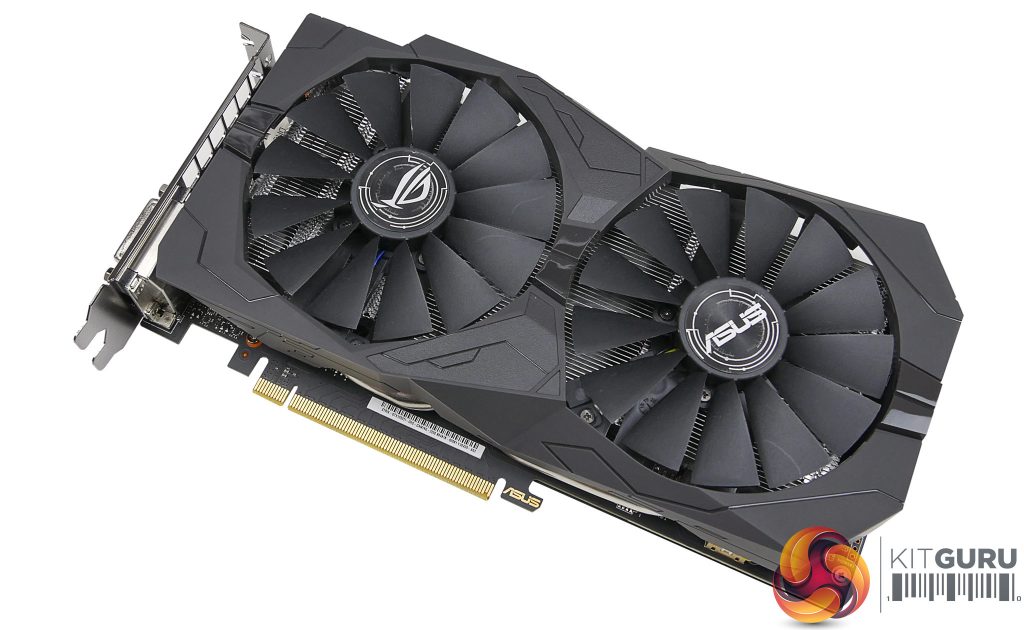Our GPU test procedure has been built with the intention of benchmarking low to mid-range graphics cards. We have a separate test procedure for benchmarking higher-end graphics cards such as the RX 480, GTX 1070 and GTX 1080.
To reflect the performance of GPUs being tested, the scope of testing has been reduced to 1080p resolution, since 1440p and 4K is largely irrelevant for GPUs of this price point.
We try to test using the DX12 API if titles offer support. This gives us an interpretation into the graphics card performance hierarchy in the present time and the near future, when DX12 becomes more prevalent. After all, at this point on the market, graphics cards tend to stay in a gamer's system for a number of product generations/years before being upgraded.
In order to keep the test data comparable with that gathered for the GTX 1050 Ti launch review, we use the older Nvidia drivers that were also used back at launch. We will be updating our entire graphics card testing suite over the coming weeks.
General Test System Notes
- AMD Graphics cards were benchmarked with the AMD Crimson Display Driver 16.10.1.
- Nvidia Graphics cards were benchmarked with the Nvidia Forceware 375.57 driver that was supplied to us for the GTX 1050 Ti launch.
Test System
| CPU |
Intel Core i7 6700K ‘Skylake' (Retail)
Overclocked to 4.5GHz Core, 4.5GHz Cache |
| Motherboard |
ASUS Maximus VIII Hero
|
| Memory |
G.Skill Trident Z
16GB (2x8GB) @ 3200MHz 16-18-18-38-2T |
| Graphics Card |
Varies
|
| System Drive |
Micron M600 256GB SATA 6Gbps SSD
|
| Games Drive | SK hynix SE3010 960GB SATA 6Gbps SSD |
| Chassis | NZXT Phantom 630 (medium fan speed) |
| CPU Cooler |
Corsair H110i GT
|
| Power Supply |
Seasonic SS-760XP 760W Platinum
|
| Operating System |
Windows 10 Professional with Anniversary Update (64-bit)
|
Our test system consists of an overclocked Core i7-6700K processor and 16GB of 3200MHz G.Skill DDR4. We completely understand that the graphics cards on show today will not be partnered with such high-end hardware, but the intention is to completely remove other bottlenecks from the system and put the performance onus solely on the GPU.
Comparison Graphics Cards List
| Graphics Card |
Core Clock
|
Boost Clock | Memory Clock | VRAM Capacity | Power Connector(s) |
| EVGA GTX 750 TI 2GB Superclocked | 1176 MHz | 1255 MHz | 5400 MHz | 2GB | None |
| PNY GTX 950 2GB XLR8 OC | 1152 MHz | 1342 MHz | 7200 MHz | 2GB | 1x 6-pin |
| PNY GTX 960 4GB XLR8 OC | 1203 MHz | 1266 MHz | 7200 MHz | 4GB | 1x 6-pin |
| Zotac GTX 970 4GB | 1076 MHz | 1216 MHz | 7012 MHz | 4GB | 2x 6-pin |
| ASUS GTX 1050 Ti 4GB Expedition ‘Reference' | 1290 MHz | 1392 MHz | 7008 MHz | 4GB | None |
| MSI GTX 1050 Ti 4GB Gaming X | 1354MHz | 1468MHz | 7008MHz | 4GB | 1x 6-pin |
| Nvidia GTX 1060 6GB FE | 1506 MHz | 1708 MHz | 8008 MHz | 6GB | 1x 6-pin |
| Sapphire R7 370 4GB Nitro | 985 MHz | N/A | 5600 MHz | 4GB | 1x 6-pin |
| MSI R9 380 4GB Gaming 4G | 980 MHz | N/A | 5700 MHz | 4GB | 2x 6-pin |
| Sapphire R9 380X 4GB Nitro OC | 1040 MHz | N/A | 6000 MHz | 4GB | 2x 6-pin |
| Sapphire RX 460 4GB Nitro | 1175 MHz | 1250 MHz | 7000 MHz | 4GB | 1x 6-pin |
| Sapphire RX 470 4GB Nitro+ OC | 1143 MHz | 1260 MHz | 7000 MHz | 4GB | 1x 8-pin |
| Sapphire RX 480 8GB Nitro+ OC | 1208 MHz | 1342 MHz | 8000 MHz | 8GB | 1x 8-pin |
The GTX 1050 Ti reference-clocked results are gathered using an ASUS Expedition model. This model runs at reference clocks and acts as a good comparison point, given the lack of a stock-clocked reference or Founder's Edition board from Nvidia.
Software and Games List
- 3DMark (DX11 Synthetic)
- Unigine Heaven (DX11 Synthetic)
- Steam VR Performance Test
- Ashes of the Singularity (DX12)
- Gears of War 4 (DX12)
- Grand Theft Auto V (DX11)
- Metro Last Light Redux (DX11)
- Rise of the Tomb Raider (DX12)
- The Witcher 3: Wild Hunt (DX11)
- Total War: Warhammer (DX12)
Be sure to check out our sponsors store EKWB here
 KitGuru KitGuru.net – Tech News | Hardware News | Hardware Reviews | IOS | Mobile | Gaming | Graphics Cards
KitGuru KitGuru.net – Tech News | Hardware News | Hardware Reviews | IOS | Mobile | Gaming | Graphics Cards



